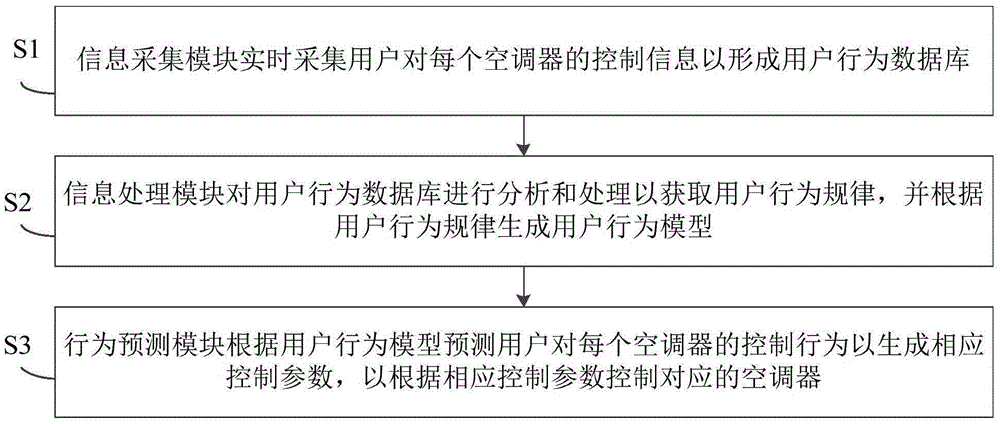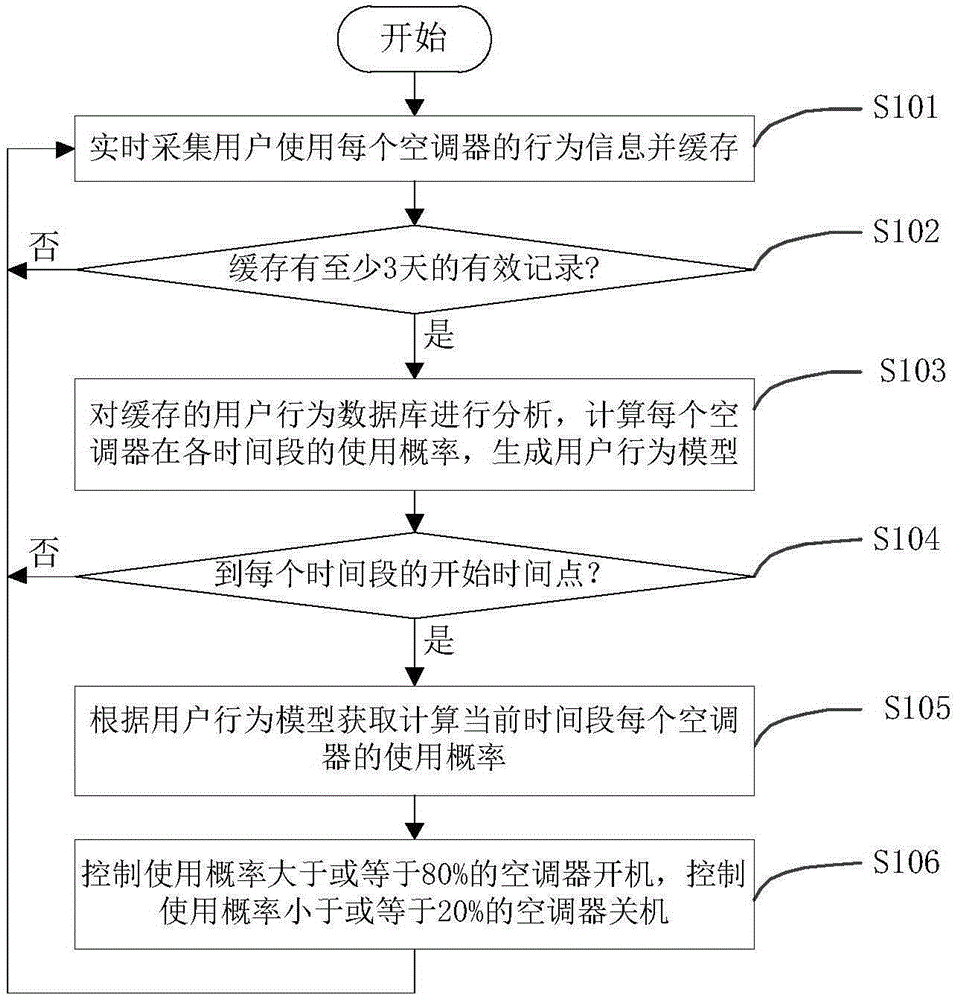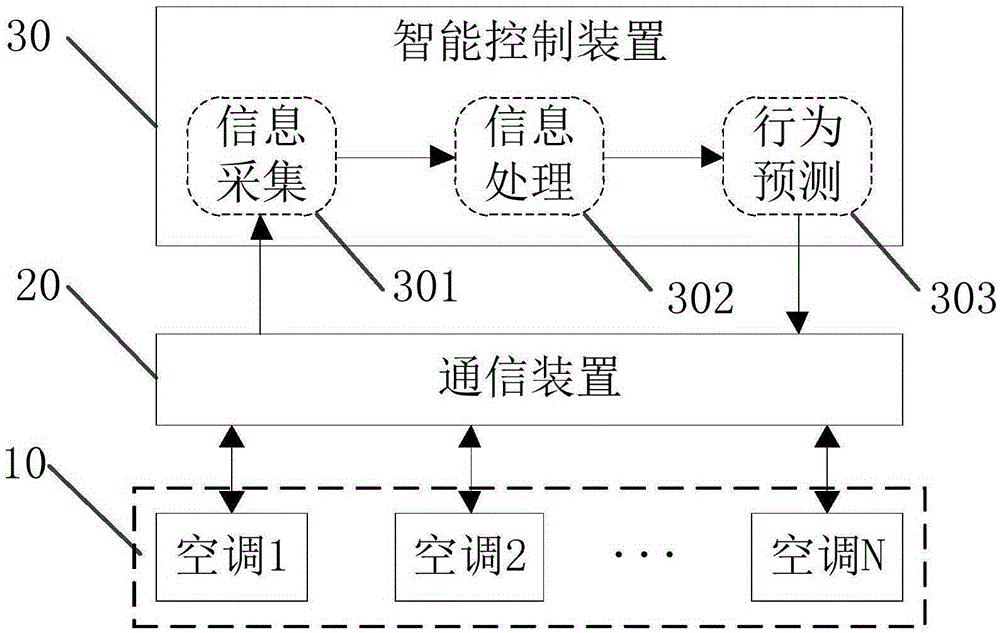User behavior self-learning air conditioning system and control method thereof
An air-conditioning system and control method technology, applied in heating and ventilation control systems, heating and ventilation safety systems, applications, etc., can solve problems such as user inconvenience, manual closing, manual opening, etc., to achieve good convenience and experience, and strong practicability Effect
- Summary
- Abstract
- Description
- Claims
- Application Information
AI Technical Summary
Problems solved by technology
Method used
Image
Examples
Embodiment Construction
[0021] Embodiments of the present invention are described in detail below, examples of which are shown in the drawings, wherein the same or similar reference numerals designate the same or similar elements or elements having the same or similar functions throughout. The embodiments described below by referring to the figures are exemplary and are intended to explain the present invention and should not be construed as limiting the present invention.
[0022] The following describes the user behavior self-learning air conditioning system control method proposed by the embodiments of the present invention and the user behavior self-learning air conditioning system implementing the method with reference to the accompanying drawings.
[0023] figure 1 It is a flow chart of the control method of the user behavior self-learning air conditioning system according to the embodiment of the present invention. The user behavior self-learning air conditioning system includes at least one ...
PUM
 Login to View More
Login to View More Abstract
Description
Claims
Application Information
 Login to View More
Login to View More - R&D
- Intellectual Property
- Life Sciences
- Materials
- Tech Scout
- Unparalleled Data Quality
- Higher Quality Content
- 60% Fewer Hallucinations
Browse by: Latest US Patents, China's latest patents, Technical Efficacy Thesaurus, Application Domain, Technology Topic, Popular Technical Reports.
© 2025 PatSnap. All rights reserved.Legal|Privacy policy|Modern Slavery Act Transparency Statement|Sitemap|About US| Contact US: help@patsnap.com



